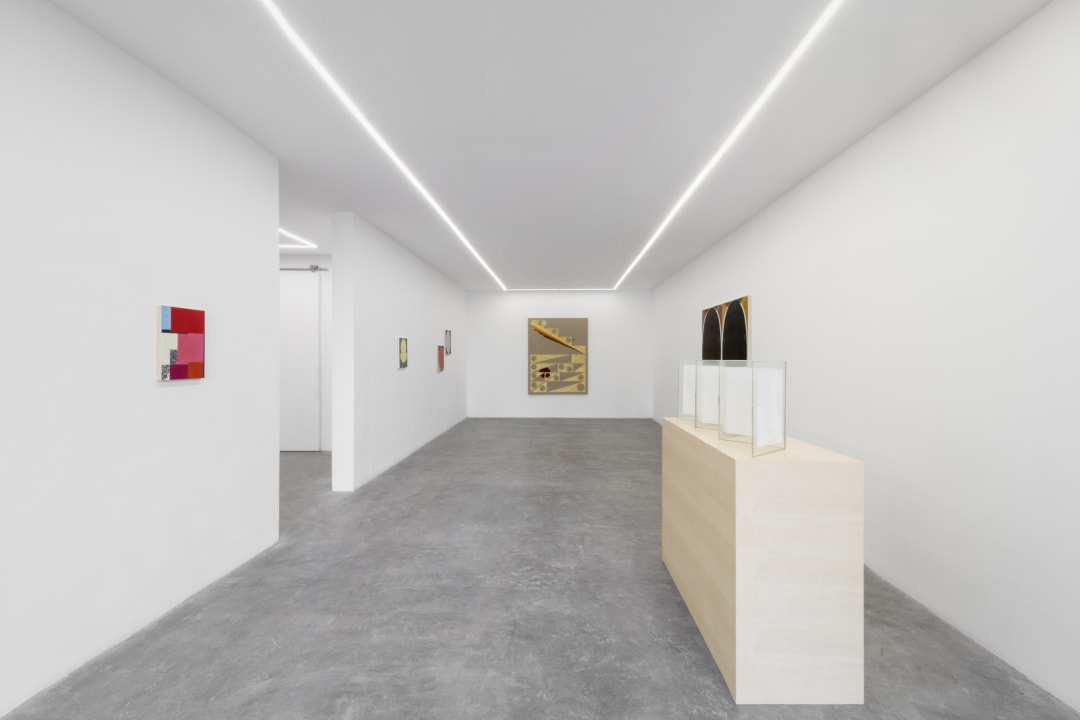This exhibition is a love letter to the common form, a type of recent abstraction related to the utopian movements of modernism. In the early twentieth century, modernists like Joaquín Torres García and Luis Barragán pursued geometries that were, supposedly, universal. Accessible and applicable to all, these forms would, quixotically, change the world and unite subjects. Today, this exhibition exchanges the idealism of the “universal” for the more profane “common,” constellating works of art that allow us the space to imagine new ways of being together.
What does it mean to pursue a utopian trajectory, today? While aspiring to the universal, the modernist projects of the early twentieth century were often, contradictorily, bound up with the construction of nationalism. The common forms in this exhibition offer wholeness and a sense of optimism in contrast to polarization and discord. During a shared moment of cultural urgency, and a time of disenchantment with the world, abstraction is not estranged from the terrain of politics. With this belief at hand, this exhibition assembles an aesthetic that pictures what exists beyond the ordered restrictions of stark, identitarian binaries: something common.
The works in this exhibition argue for the sustained vitality of abstraction, and the human being is implicated in most of the works. After being a member of the socially-engaged artist collective Group Material in the 1980s and ‘90s, and undertaking activist projects on the AIDS crisis and U.S. intervention in Latin America, Doug Ashford turned to abstract painting. A photograph of 50,000 anti-war protestors in New York becomes the basis for Red Day 1966, which Ashford has painted in hues of red, yellow, and blue to propose a new way of picturing this aspirational moment of assembly. Alice Tippit’s electric, distilled shapes elude clear definition and speak to a graphic modernism. Her tightly rendered forms, ostensibly without a reference point in the world, suggest traces of human presence: we see the back of the mouth or a torso that seem to disappear and rematerialize in the composition.
Nevine Mahmoud’s sleek sculpture made in Portuguese marble, Forbidden Fruit, extends the exhibition’s inquiry beyond painting, evoking the reduced form of a human figure, as well as a tension between transcendence and immanence. Gabriel Rosas Alemán invites viewers to look closely at his oil paintings on paper to consider the subtleties of these works. Describing the monochromatic shapes as interwoven “presences,” he models a type of pre-linguistic universal visual form of communication.
Eamon Ore-Giron’s geometric abstractions on raw linen channel a “nostalgia for a global modernism,” referencing early twentieth century utopian movements like Concretismo that sought create pure and universal forms of absolute clarity. Pyramids, circles, and negative space become building blocks for infinitely configurable compositions. In Two Visions, Heather Guertin pursues the oval as a shape imbued with openness, civility, and calm. This series of works continually investigates how a humble form can become something greater: the void, a being, and a space to contemplate what we hold in common.
Curated by Owen Duffy
With works by Doug Ashford, Heather Guertin, Nevine Mahmoud, Eamon Ore-Giron, and Gabriel Rosas Alemán.
